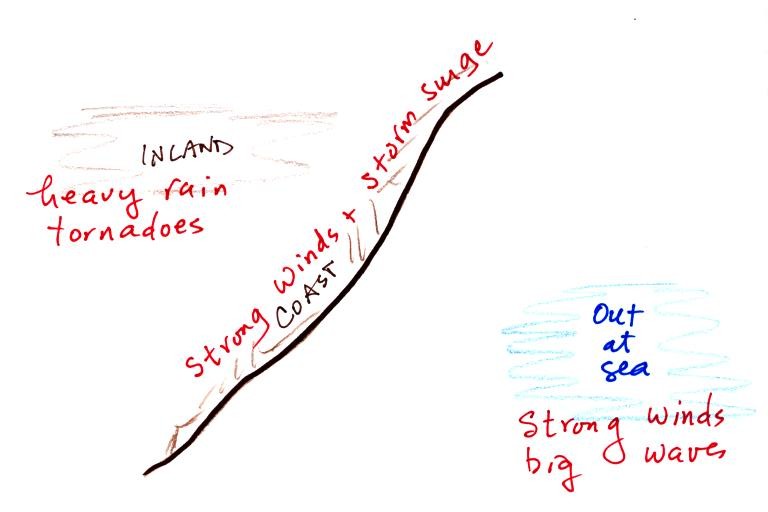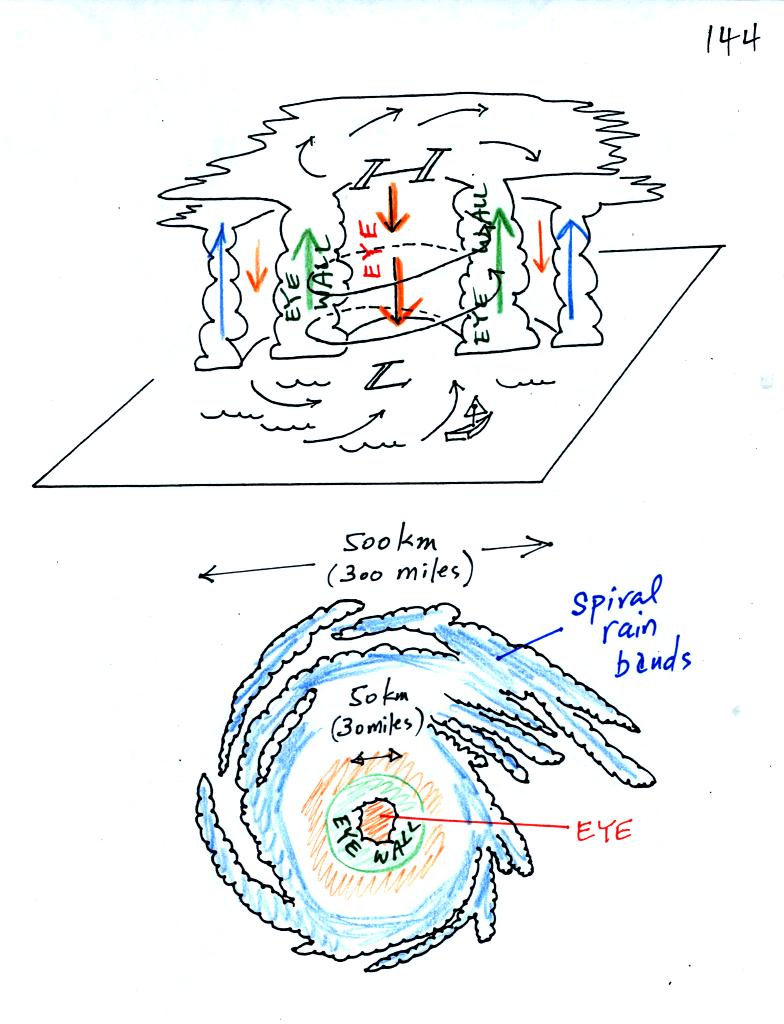
Out at sea,
the converging surface
winds
create
surface
currents
in the
ocean that transport water toward the center of the hurricane.
The rise in ocean level is probably only a few feet, though the waves
are much larger. A return flow develops underwater that carries
the water back to where it came from.
As the hurricane approaches shore, the
ocean becomes
shallower.
The return flow must pass through a more restricted space. A rise
in ocean level will increase the underwater pressure and the return
flow will speed up. More pressure and an even faster return flow
is needed as the hurricane gets near the coast.
Here is a link to the storm surge website
(from the Hurricane Research Division of the Atlantic Oceanographic and
Meteorological Labororatory). It has an interesting animation
showing output from the SLOSH model used to predict hurricane storm
surges and the flooding they can cause.
We watched another short video at the end of class. It mostly
described the arrival of Hurricane Camille along the Mississippi coast
in 1969. Camille is the 2nd most intense hurricane to hit the US
(see p. 146a in the photocopied
ClassNotes)
The
following figure wasn't shown in class. The storm surge
probably causes the most hurricane damage along a coastline.
Further out at sea strong winds and high seas are the biggest
hazard. Once a hurricane moves onshore it weakens very rapidly
(friction slows the winds and the hurricane is cut off from its supply
of moisture). However very heavy rains, thunderstorms and
tornadoes can remain a threat over a large area for days to come.

The
following information wasn't covered in class.
The 2005 hurricane season (the year Hurricane Katrina hit New Orleans)
was unusual in many respects.
3 of the 10 most intense Atlantic hurricanes ever
( Wilma, Rita, and
Katrina) occurred in 2005 (you'll find the top 10 listed on p. 146a in
the photocopied classnotes). Wilma became the
most intense hurricane of all time in the Atlantic, beating out
Hurricane
Gilbert (1988) which was featured in the video tape segment shown in
class last Friday.
On average there are about 10 named storms (tropical storms and
hurricanes) in the Atlantic per year. Before 2005 the record was
21 storms. There were 28 storms in 2005 which blew the old record
out of the water.
Katrina was the third most intense hurricane to hit the mainland US and
easily became the most costly natural disaster in US history.
Fortunately none of the 2005 storms came close to becoming the
deadliest
hurricane in US history. That distinction belongs to the 1900 Galveston
hurricane.








